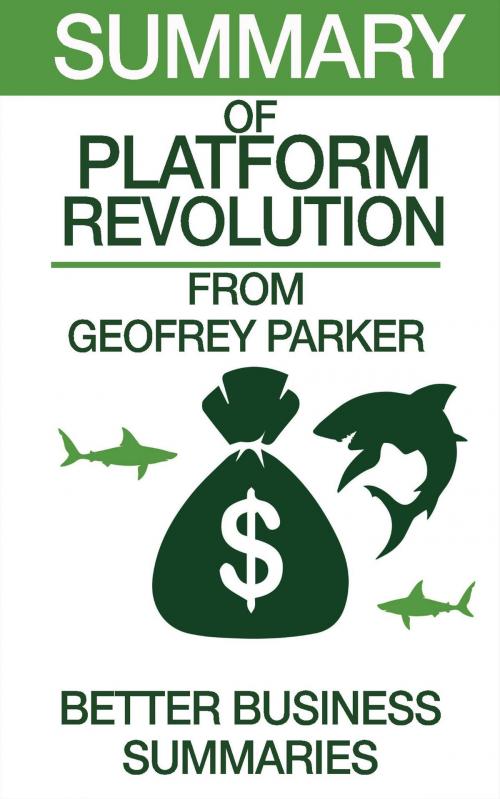Platform Revolution | Summary
Business & Finance, Economics, Development & Growth, Entrepreneurship & Small Business, New Business Enterprises| Author: | Better Business Summaries | ISBN: | 9781370888375 |
| Publisher: | Summary Station | Publication: | May 13, 2017 |
| Imprint: | Smashwords Edition | Language: | English |
| Author: | Better Business Summaries |
| ISBN: | 9781370888375 |
| Publisher: | Summary Station |
| Publication: | May 13, 2017 |
| Imprint: | Smashwords Edition |
| Language: | English |
Platform Revolution by Geoffrey Parker, Marshall Van Alstyne, and Sangeet Choudary is a thorough take at the development of platforms as market dominators, their opposition against pipeline organizations, and best practices in establishing and overseeing platforms. Platforms interface two sorts of clients with a specific end goal to trade something of significant worth. This is not quite the same as the customary pipeline model of business where something of significant worth is made by exchanging it from maker to maker with the buyer accepting it at the last stride. Platforms are ruling forms especially in light of the fact that they diminish the expenses of significant creation, utilization, and quality control.
Platforms serve customer confronting markets and business-to-business showcases which can control quick development through economies of scale. Every side of the system relies on the opposite side to be set up keeping in mind the end goal, so a focal test of any platform is to enroll clients on both sides. Client development on one side of the platform pulls in more clients on the opposite side as the consequence of the "system impact," which depicts how changes to one part of a system can impact different parts of the system. Platforms can burn through cash on plans to draw in clients to a system and then make their profit back with the resulting development on the opposite side of the system. The platform's measurements for achievement are not just those that demonstrate the span of the system but instead those that show effective communications between clients. This relies on ensuring passage to the system is as "frictionless" as could be allowed, as the convenience of the platform for curating the associations between the diverse sorts of clients is specifically influenced by hindrances.
Platform Revolution by Geoffrey Parker, Marshall Van Alstyne, and Sangeet Choudary is a thorough take at the development of platforms as market dominators, their opposition against pipeline organizations, and best practices in establishing and overseeing platforms. Platforms interface two sorts of clients with a specific end goal to trade something of significant worth. This is not quite the same as the customary pipeline model of business where something of significant worth is made by exchanging it from maker to maker with the buyer accepting it at the last stride. Platforms are ruling forms especially in light of the fact that they diminish the expenses of significant creation, utilization, and quality control.
Platforms serve customer confronting markets and business-to-business showcases which can control quick development through economies of scale. Every side of the system relies on the opposite side to be set up keeping in mind the end goal, so a focal test of any platform is to enroll clients on both sides. Client development on one side of the platform pulls in more clients on the opposite side as the consequence of the "system impact," which depicts how changes to one part of a system can impact different parts of the system. Platforms can burn through cash on plans to draw in clients to a system and then make their profit back with the resulting development on the opposite side of the system. The platform's measurements for achievement are not just those that demonstrate the span of the system but instead those that show effective communications between clients. This relies on ensuring passage to the system is as "frictionless" as could be allowed, as the convenience of the platform for curating the associations between the diverse sorts of clients is specifically influenced by hindrances.















